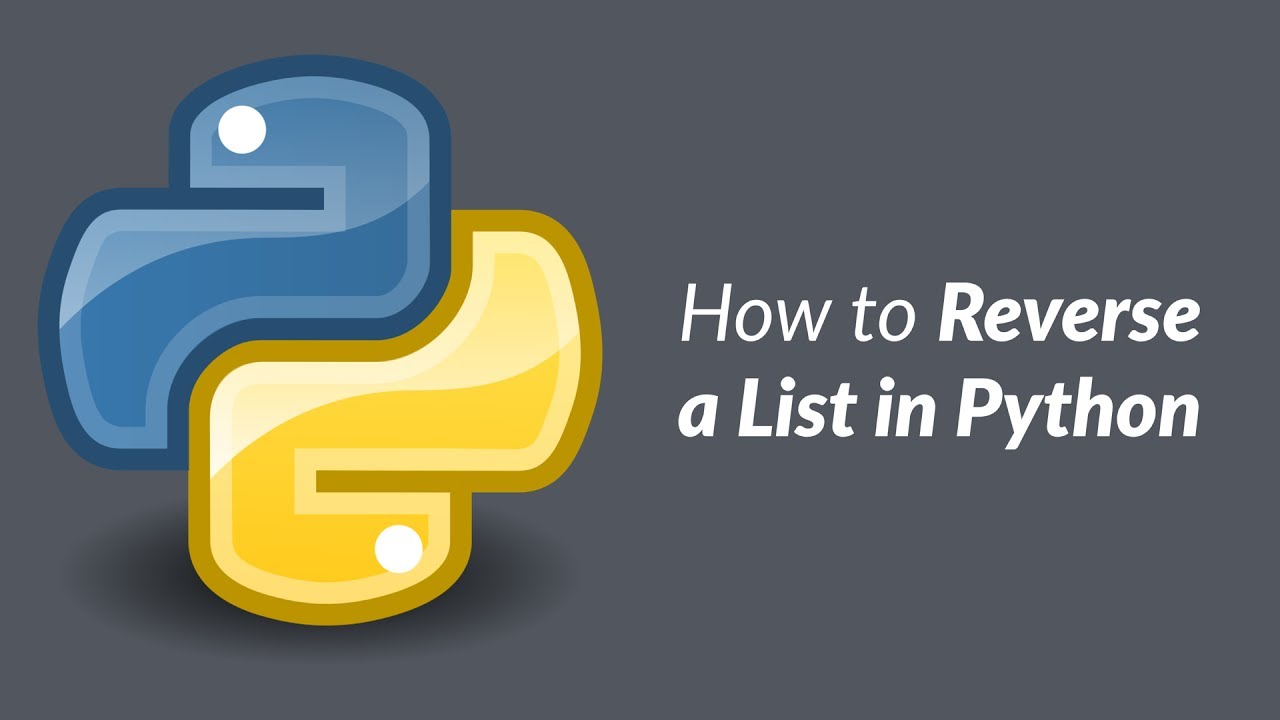A Beginner’s Guide on How to Reverse a List in Python
When learning any programming language, one of the first challenges that beginners encounter is handling data stored in lists or arrays. Python, being a beginner-friendly language, offers multiple ways to deal with lists. Among the most common operations, reversing a list is one that comes up often. If you are new to programming and want to understand how to reverse a list in Python, this guide will take you step by step through the process.
Lists in Python are ordered collections, meaning the order of elements is maintained. But sometimes, you may need to view items from the last element back to the first, or prepare data for tasks like sorting, searching, or display. Let’s walk through various ways to achieve this.
What is a List in Python?
Before diving into how to reverse a list in Python, it is important to understand what a list is. A list is a built-in data type in Python that can hold multiple values, even of different data types, inside square brackets. For example:
Here, numbers is a list containing five integers. The position of each element is determined by its index, starting from 0. So, numbers[0] equals 10, and numbers[4] equals 50.
Because lists are ordered, the sequence of elements matters. Sometimes, you may want to reverse this order.
Why Reverse a List?
Reversing a list may sound like a small task, but it can be useful in many real-world situations:
- Displaying data from the most recent to the oldest.
- Flipping the order of items for analysis.
- Simplifying tasks where the backward order is more meaningful.
- Preparing results for algorithms that need reversed inputs.
Learning how to reverse a list in Python ensures you can work confidently with datasets that require order manipulation.
Method 1: Using the reverse() Method
Python lists come with a built-in function called reverse(). This method directly modifies the original list by flipping the order of elements.
This approach is simple and efficient. However, it changes the original list rather than creating a new one. If you need a fresh list, other methods may be more suitable.
This is often the first method people use when learning how to reverse a list in Python because of its readability and ease.
Method 2: Using the reversed() Function
Python also provides a built-in function called reversed(). Unlike reverse(), this does not alter the original list. Instead, it returns an iterator that produces elements in reverse order.
The key advantage here is that the original list remains intact. This method is useful when you want both the original and reversed versions of your data.
Using reversed() is another simple way to demonstrate how to reverse a list in Python effectively.
Method 3: Slicing Technique
Another elegant way to reverse lists in Python is slicing. Lists support slicing syntax that allows specifying start, end, and step values. By using a step of -1, you can reverse the list.
This method is concise and often preferred by experienced Python developers. It is a clean one-liner that many people find intuitive once they understand slicing.
For those practicing how to reverse a list in Python, the slicing method is a powerful trick to learn.
Method 4: Using a Loop
If you are learning programming fundamentals, it is valuable to know how to reverse a list without relying on built-in tools. Using loops, you can build a reversed list manually.
Although less efficient than built-in methods, this technique strengthens understanding of list operations. For many learners, practicing how to reverse a list in Python with loops is an excellent exercise.
Method 5: Using Recursion
Another approach, though not common in practice, is recursion. Recursion involves a function calling itself repeatedly until a condition is met.
This method is more about understanding problem-solving in programming than everyday use. It can be slower for large lists but shows the flexibility of Python.
When exploring how to reverse a list in Python, recursion introduces a deeper concept that challenges logical thinking.
Comparing the Methods
Each of the above methods has its pros and cons. Let’s summarize:
- reverse(): Simple, modifies the original list.
- reversed(): Returns an iterator, preserves the original list.
- Slicing: Concise, returns a new list, widely used.
- Loop: Educational, but less efficient.
- Recursion: Useful for learning concepts, not practical for large data.
Depending on your situation, you can select the most appropriate method. Mastering multiple approaches ensures you know exactly how to reverse a list in Python regardless of context.
Practical Examples
Reversing Student Names
Through these real examples, learners gain confidence in applying different strategies. By practicing, you will quickly master how to reverse a list in Python in any project.
Common Mistakes to Avoid
- Confusing reverse() with reversed(): One changes the list in place, the other does not.
- Forgetting slicing syntax: Using [::-1] can seem unusual at first.
- Ignoring performance: While loops and recursion work, they are slower on large datasets.
- Not considering immutability: Sometimes you need both original and reversed lists, so pick the method carefully.
Being aware of these mistakes helps when learning how to reverse a list in Python without unnecessary frustration.
Final Thoughts
Reversing a list is one of the foundational skills for anyone learning Python. It might look like a small detail, but it demonstrates the power of Python’s simplicity. From built-in methods like reverse() and reversed() to creative techniques such as slicing, loops, and recursion, the language gives you multiple choices.
By now, you should be comfortable with how to reverse a list in Python using various approaches. As you continue coding, try applying these methods in small projects. Whether you are analyzing data, building games, or simply experimenting, reversing lists is a tool you will use often.
Mastering this basic operation opens the door to deeper programming concepts. And the best part? Every method you’ve learned today builds a stronger foundation for becoming a confident Python programmer.




